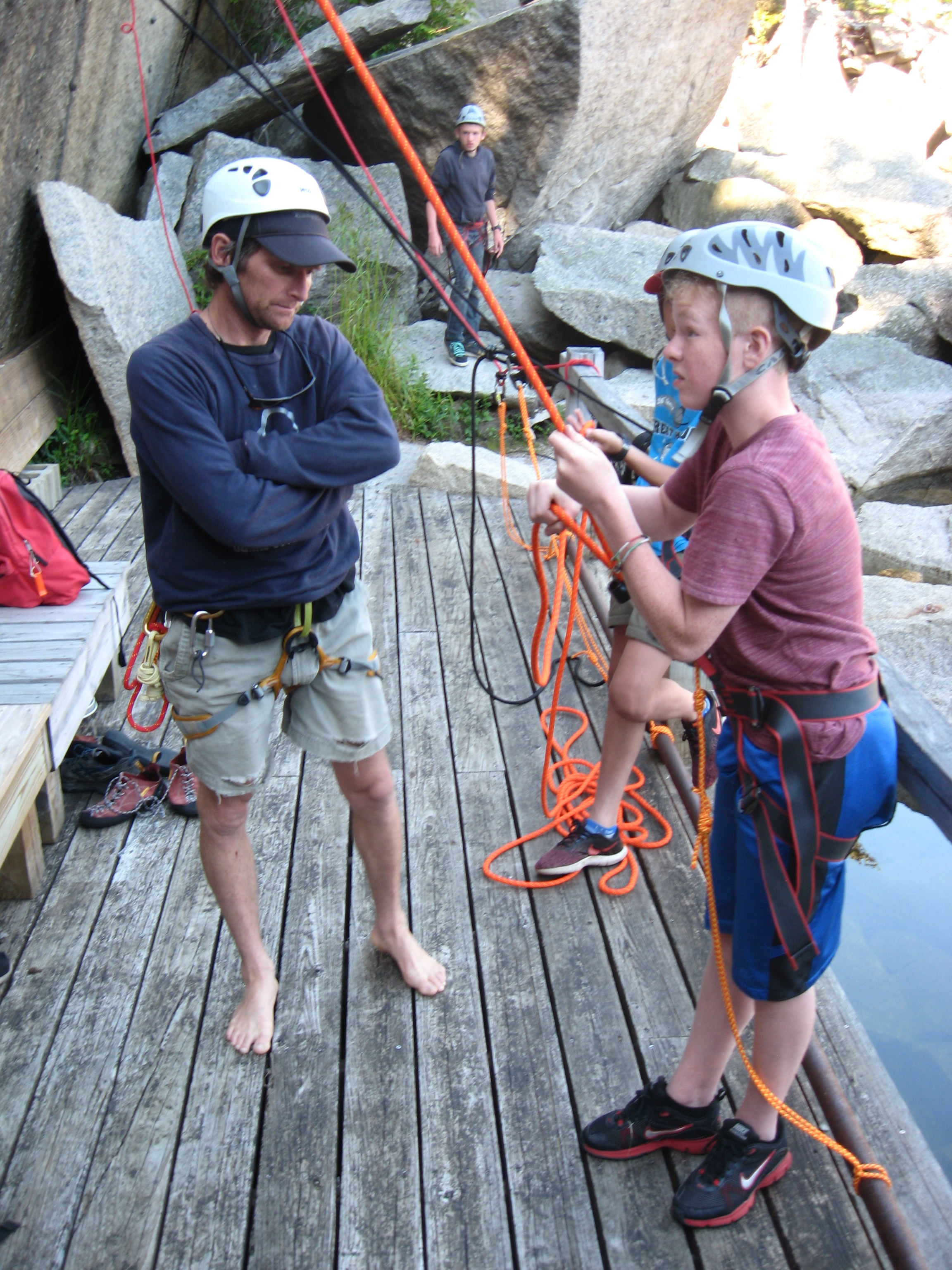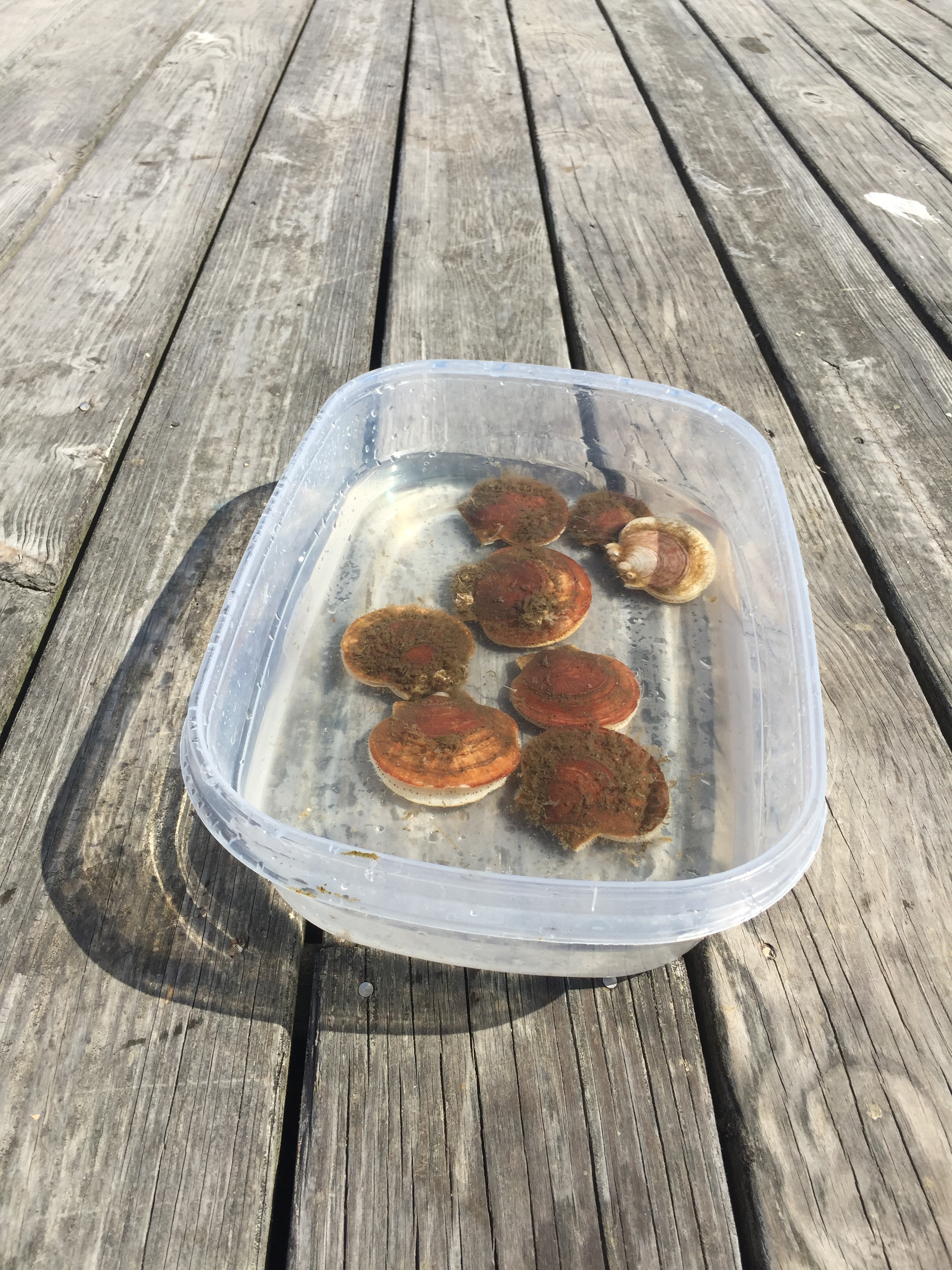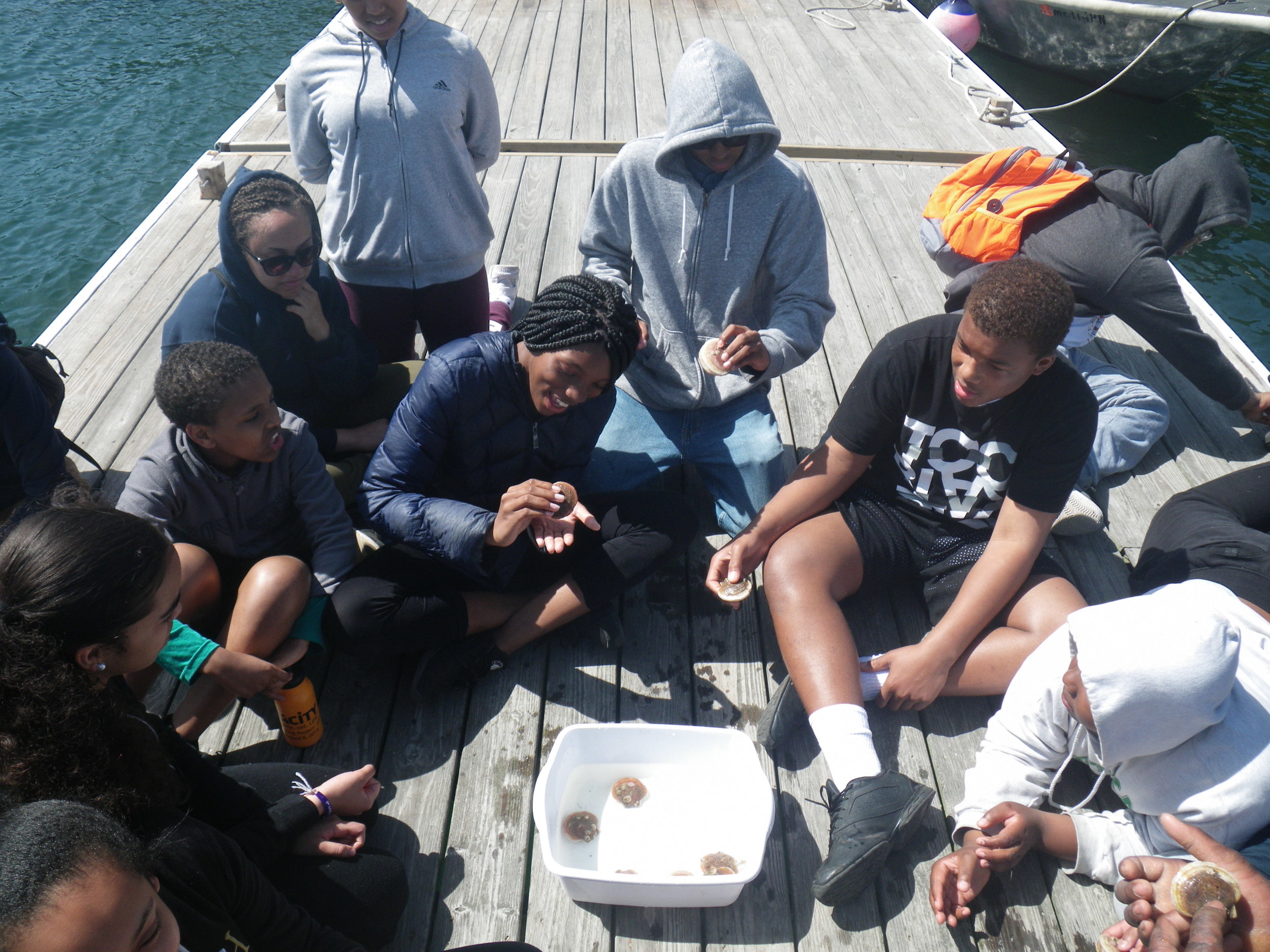Guest blog post by Science Educator Alex Griffith
At this point in the season, I’ve seen a lot of different groups come through, and each has aspects that make the time I spend with them—be it for a day or a week—unique and special.
The four days I spent with the Penobscot Bay Leadership Collaborative last week were the epitome of this. For four days, I had the privilege of working with eight boys and their continuity instructor, Sockeye, as part of a team effort with The Apprenticeshop and Hurricane Island Outward Bound School to give local midcoast Maine boys a closer look at the wonderful natural environment they find themselves in. For the four days I was with them, we learned about some of the marine and island ecology of Hurricane Island, and worked on team-building through the signature raft challenge and the climbing wall.
Facilities director and climbing guru Sam Hallowell looks on as the boys rock climb and belay.
What made this group so much fun was the fact that they already had gained some rapport with one another and would continue to do so after I left, so their time on Hurricane was not a one-off experience. The boys came in with some inside jokes, and, unsurprisingly given the way middle school boys function, left with many more, but more importantly gained a greater understanding of how to function as a group.
Another great part was the fact that I got to introduce them to the scientific component of their trip, which entailed collecting basic marine data (temperature, pH, and turbidity) and then comparing what they noticed on Hurricane to what they recorded when they were in open water in Penobscot Bay. To be their lead scientific contact over their two weeks in the Bay was a new role for me, and the boys were so enthusiastic that I had no doubt that they would be able to continue their research over the remaining week of their journey on their sailboat.
Several PBLC boys look into a refractometer to test water salinity of the Hurricane Island floating dock.
Getting the boys to slow down a little bit every day for reflection every day was probably the best part. Most of the reflection was designed to help the boys gain a greater appreciation for their surroundings through observation, and they were always willing to take a step back and think about what they had done that day and what they’d noticed the most. Our conversations were free-flowing (except for the rare time when the energy got a little too high), which is a real pleasure to have with students, and the boys were genuinely invested in their experience in a way that indicated that they really wanted to be there.
On Monday, when the boys left, they invited me out to their boat for a few minutes of rowing before they shoved off to sea in the fog. It was bittersweet having the group leave (I was sad to see them go, but at the same time, they left me exhausted), but after experiencing them as a group for the previous few days I knew they were more than ready to live on a tiny boat together for five nights. The PBLC program is special, and it was great to feel like the boys knew it just as much as their other instructors and I did.





















